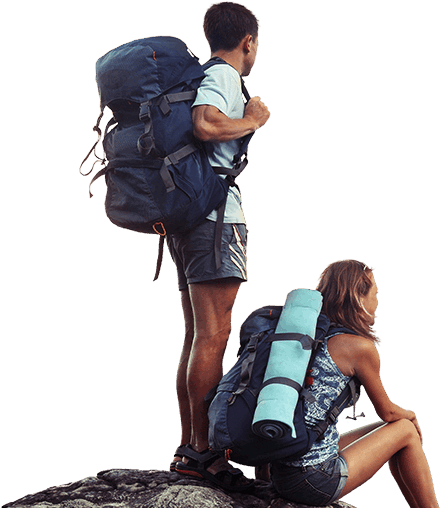
In this Trekking Grade in Nepal, any trekkers can do which lead a reasonably active life. It is the easiest treks, tours and walking in a day is not exceeding more than 5 hours, but it is depend upon to your walking speed. The trips will not more than 3000m and around of 7 to 10 days trekking on camping. There is a plenty of opportunities to view the Himalayas. The examples of this trekking grade are Trekking to Poonhill, Everest view trekking, around Kathmandu valley trekking etc.
Moderate or Grade B are included in the higher altitudes and connecting to the plateau’s of the Tibet and 3000m above the sea level. Moderate treks are designed for 7 to 15 days that rely on the trekkers’ interests as well. Some demands 15 days more above 5000m high. In this Trekking grades, trekkers need to walk up to 7 to 8 hours in days and not so hard trekking. It is mixture of some longer and shorter trek. Paths can be rough, steep and have many ‘ups’ and ‘downs’ with some exposure. Early in the season expect snow patches at higher altitudes. Good health conditions and level of fitness are essential.
Strenuous trekking grade are combination of strenuous and moderate walk which are normally 6 to 8 hours a day at an altitude up to 5000m with side trips to higher elevations. This is classified as ill – defined trails, away from habitation. Considered to be harder therefore preparation for fitness and good health conditions are essential. However, you must be very fit for this sort of trip. Those who suffer from asthma, high blood pressure, heart disease or complicated medical conditions adversely affected by strenuous exercise may not participate.
Challenging Trekking grade is limited to those with an excellent level of personal experience and fitness of an outstanding sense of humor and high tolerance levels. It is challenging trekking, which the most are fascinating and operating to the height of 6000m. It is the most exciting to observe them. This type of trek needs 16- 28 days more for going the trekking on the higher altitudes. During the trek you may have to cross-snow – covered passes in very remote areas or climb up to 6000meters in altitude
Nevertheless we want to warn our trekkers that the level of difficulty of a trek is very subjective. Weather conditions, your physical condition, possible health problems during the trek and other factors can have an important influence on the way you experience a trek.